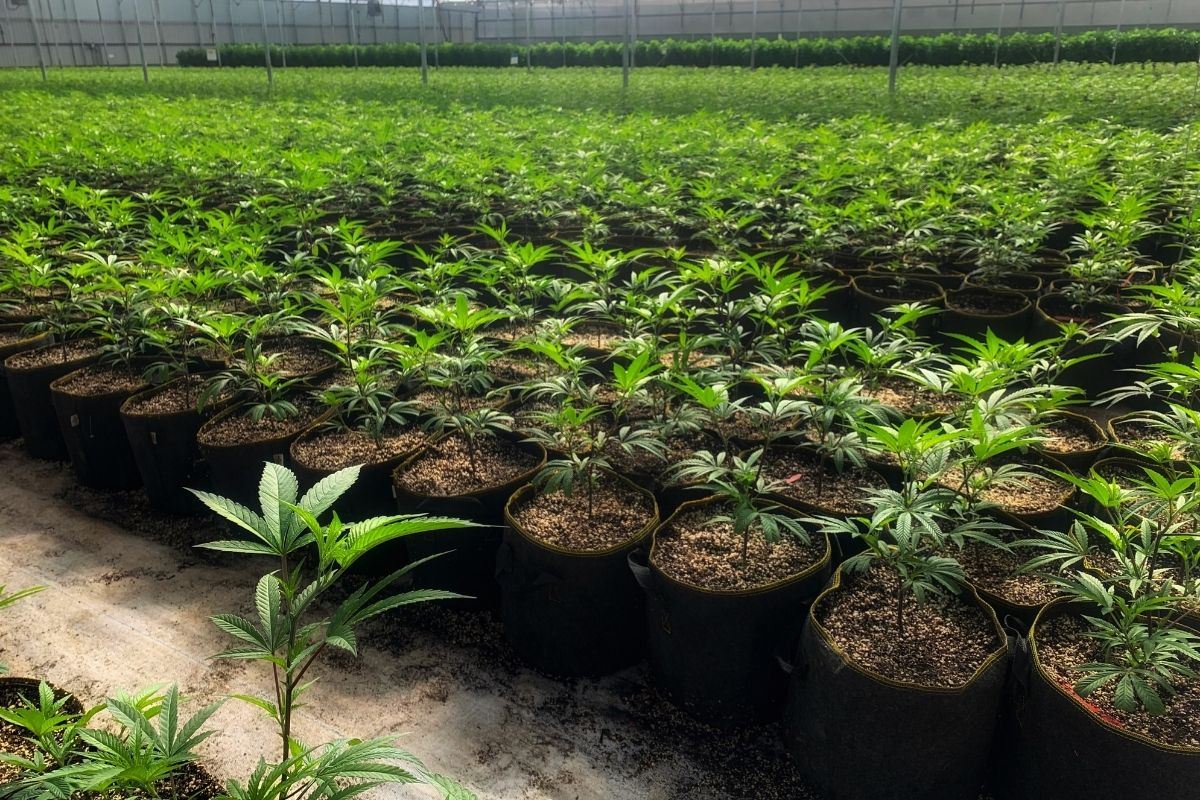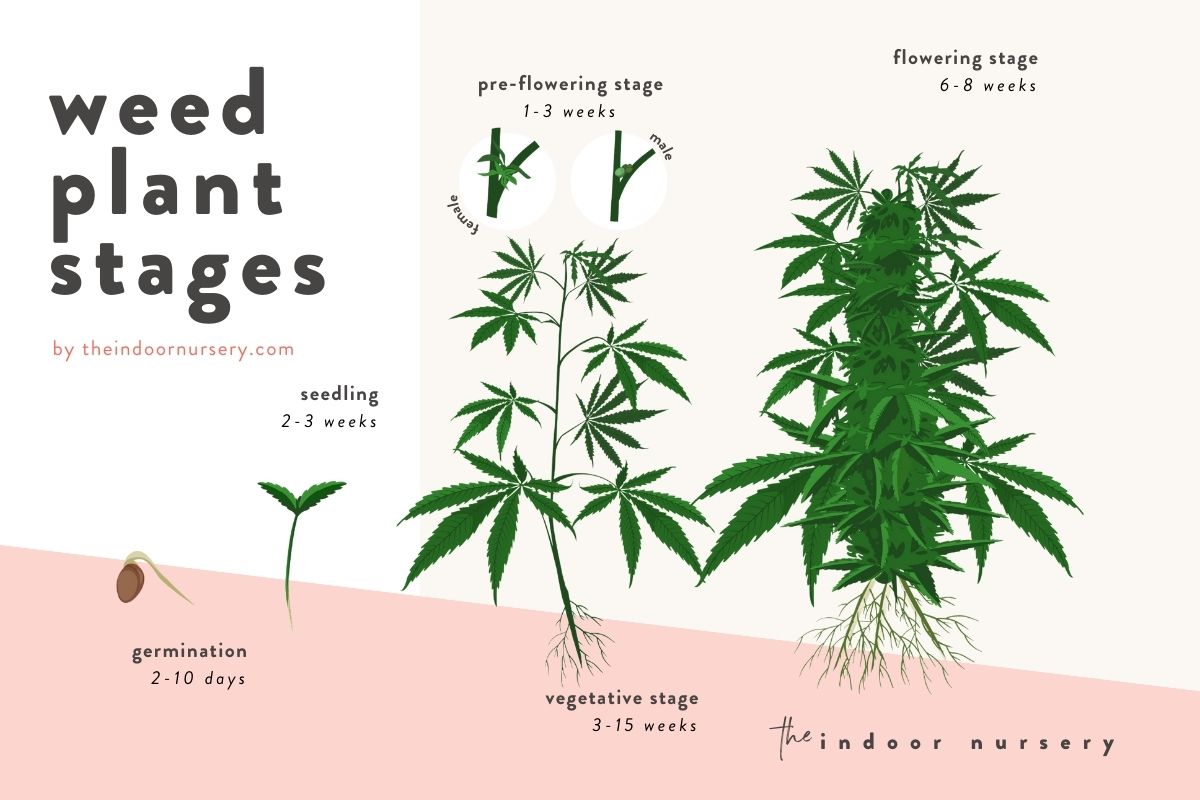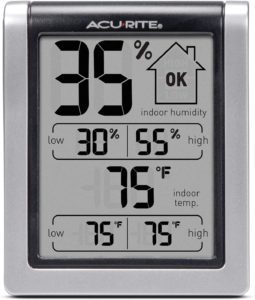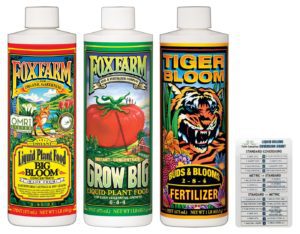Key takeaways
- Knowing when to make that change is an important part of overseeing indoor marijuana plant growth.
- The point that you flip a plant during its vegetative stage will have an impact on its flower yield.
- The number of stems and budding nodes on the plant will naturally increase throughout the vegetative stage, but if you wait too long to flip your plants, they can outgrow your space.
- Once the plant is flipped, it will direct more of its energy to making flower buds rather than leaves, but it will still keep growing in height as well.
- The flowering period is the last stage in the lifecycle of the cannabis plant, during which healthy marijuana plants will develop the resinous flower buds for you to harvest.
Transitioning a cannabis plant from its vegetative stage to flowering is known as “flipping.” As an indoor grower, you can flip your plants into flowering stage by reducing the number of hours of light they receive each day. This typically means reducing your light schedule from the 16 hours of light recommended for the vegetative stage to an even 12 hours of light and 12 hours of darkness for the flowering stage.
The beauty of growing cannabis indoors is that you can choose when exactly to trigger the change.
when to flip from veg to flower
Some species of indoor cannabis plants don’t need to be “manually” flipped from the vegetative stage to flower, but most do. Those that don’t are known as autoflowers, and those strains don’t need a change in light to prompt the plants to produce buds. Most cannabis plants are photoperiod dependent, meaning they need a certain amount of light at different stages in their life.
This tends to follow the variable lighting they would get in nature from spring to fall: as seedlings, they can get 18 or more hours of light a day, and as they mature, they need less light, about 16 hours per day as a vegetative bush like they would during the summer as the days slowly shorten. In nature, cannabis plants begin budding towards the end of summer and into fall as the daylight hours dwindle and the lighting schedule shifts closer to an even amount of daily light and darkness.
The best time to flip cannabis plants is typically between 9 and 15 weeks, whenever the plants reach a height of at least one foot. Leading up to this growth phase, start to consider the condition of the plant and whether or not it’s healthy enough to transition to its flowering phase.
Your setup, the size of the plant, and its condition will all inform you as to whether the plant is ready to be flipped. Inspecting your plants throughout the vegetative state will help you catch stress or weaknesses before they become a serious problem and interfere with your plans to flip your plants. These issues can be more challenging to fix during the flowering stage, since growth slows as most energy is directed to developing buds and blooms.
preparing to flip your cannabis plant
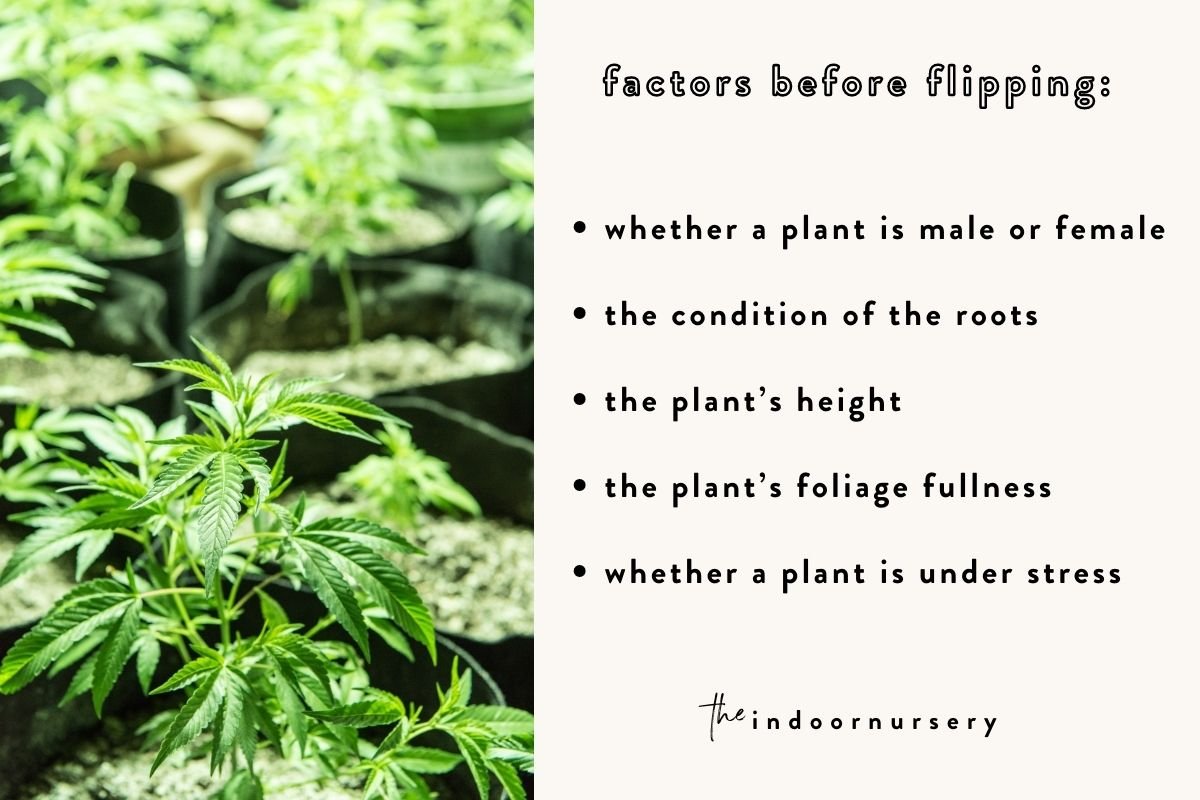
Along with regular fertilizing, watering and humidity control, there are a few additional things you should do in preparation for flipping your cannabis plants. Throughout the vegetative stage, prune your plants so they grow into a strong bush that will be able to support its coming blooms. This is known as training, and it can be done from the beginning of the vegetative stage onwards. Low-stress training includes tying branches so they pull away from the lower branches of the plant and expose them to more light, or using trellises or horizontal netting for vertical support. High-stress training includes pruning stems and leaves so the plant doesn’t get so full that it shades its lower branches and foliage. High-stress training requires more energy to heal, which is why it’s best to do while the plant is in its vegetative period and has energy to spare.
If you’re planning to move your plant into a new pot before flipping it to flower, you should do it a couple of weeks before you plan to transition the stages. This will help the plant avoid transfer shock, allowing its roots to resituate and the plant to fully recover from the move before adjusting to the change in light.
Before making any changes to your plant’s environment (whether repotting or flipping), you should inspect all the plants in your growing space to see if they’re ready. These factors include:
- Whether a plant is male or female
- The condition of the roots
- The plant’s height
- The plant’s foliage fullness
- Whether a plant is under stress
sex
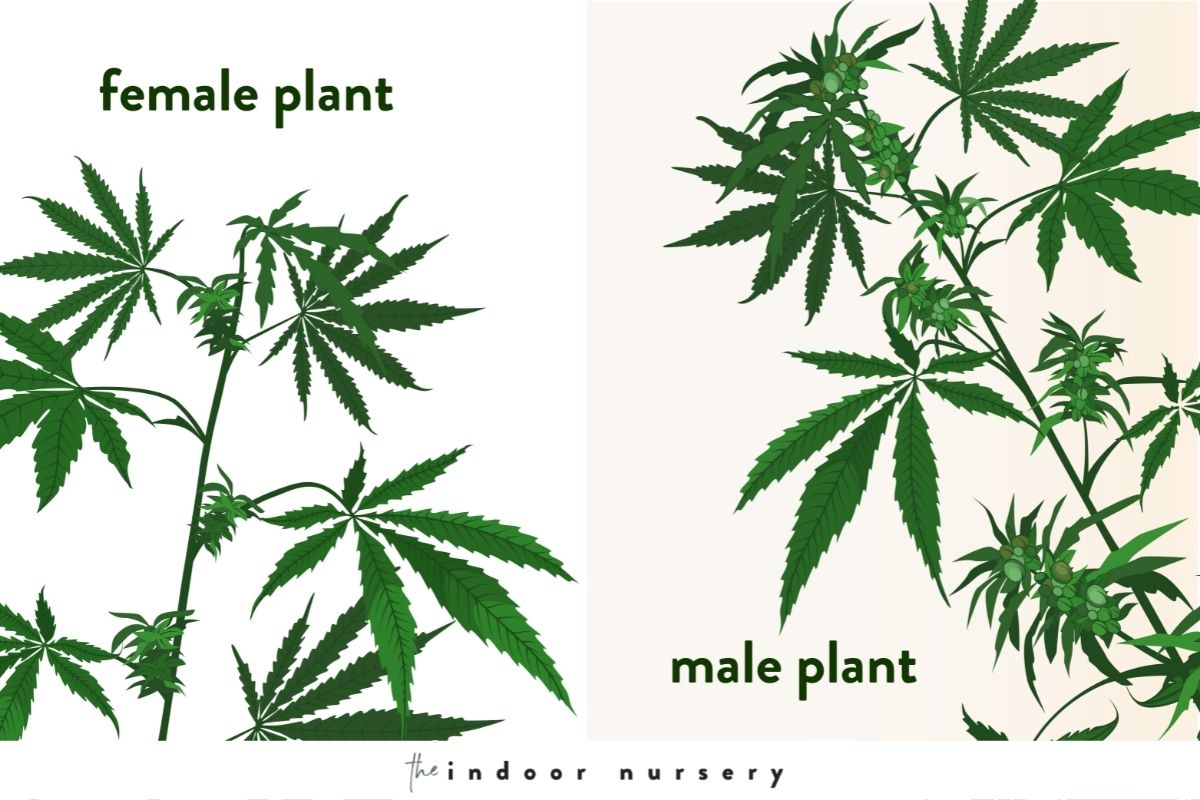
Following your weed plant stages and checking for signs of sexual maturity is an important first step in evaluating the plants to transition to flower. Male plants don’t produce substantial flower buds, and if they are left with female plants, they will pollinate the females, who will then produce lots of seeds in their flower buds. As soon as you identify male plants by their stamen (pollen-filled sacs on stem nodes), move them away from female plants to prevent pollination and keep your tent full of plants that will produce as many seedless colas (groups of flower buds) as they can .
roots
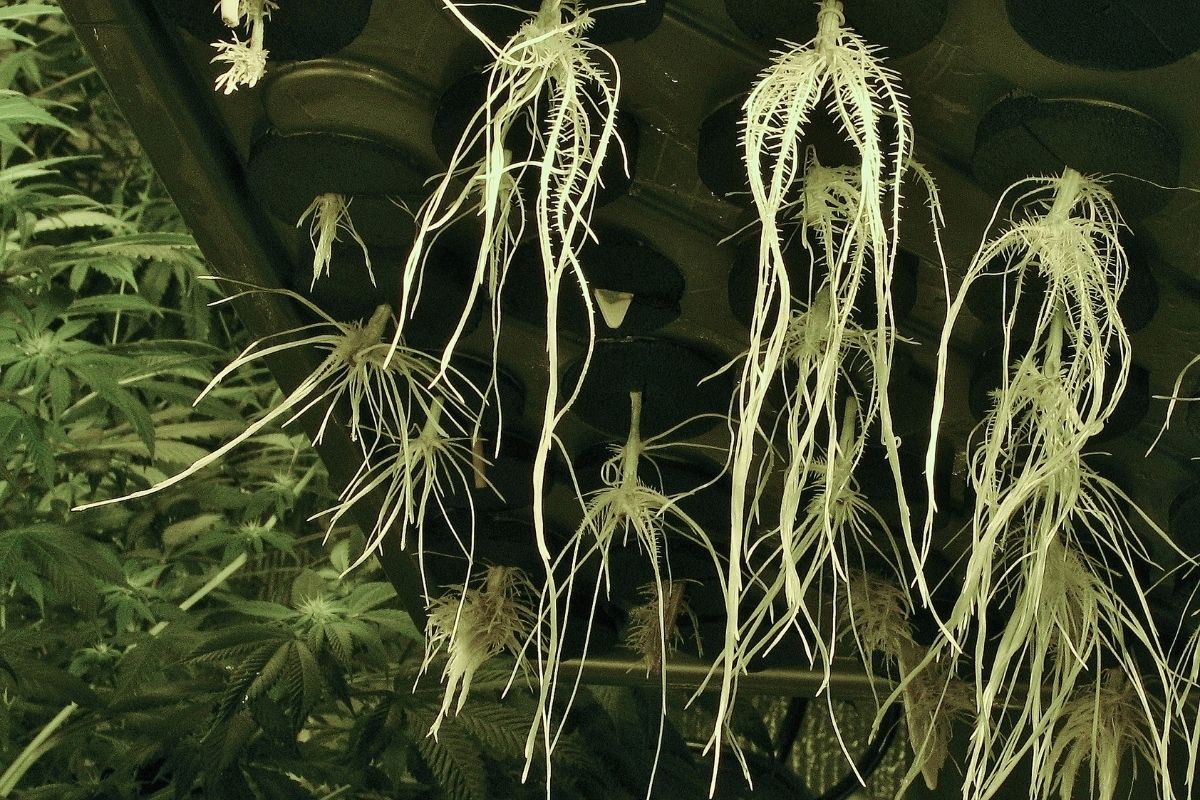
Repotting your cannabis plants before flipping them gives you an opportunity to inspect their roots. If they’re healthy and in good condition, then they will give their best performance when flowering. Weak or stressed roots will have to give their energy to repair and recovery, which is why transfers should be done in the vegetative stage, allowing for enough recovery time to correct for errors in timing and your evaluation of the plant’s readiness to be moved. Using a root supplement during repotting is a good idea to prevent root shock.
If you grew your plants from clones or propagations, rather than seeds, you will need to evaluate the roots to make sure they’re strong enough to support flower buds. When a plant grows from seed, the roots grow in proportion to the upper plant. When you grow plants from clones, on the other hand, the root growth has to catch up with the foliage growth, which is already in vegetative stage. You usually need to give clones many weeks to develop strong roots before flipping them into the flowering stage.
height
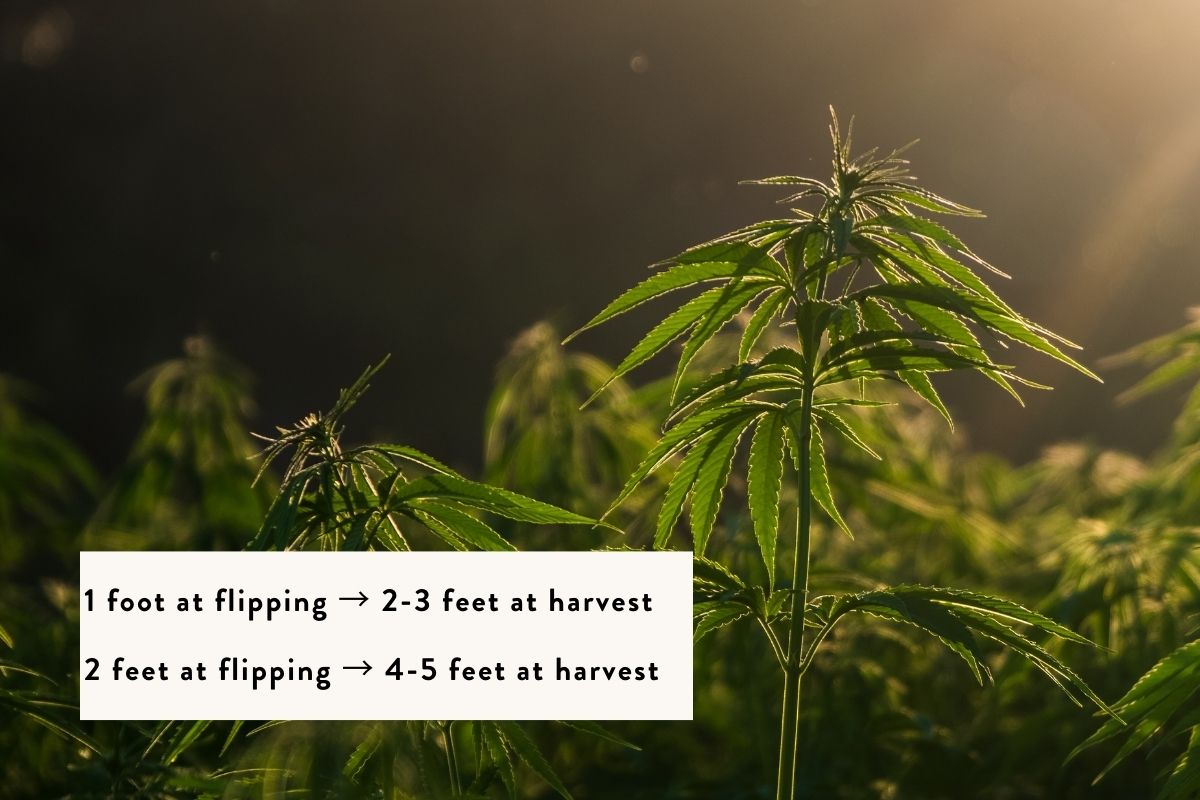
The general rule of thumb is that plants tend to at least double in height during the flowering stage. If you don’t take this into account when you choose to clip your plants, your plants might grow too close to your grow lights or outgrow your tent altogether. Timing your vegetative stage while keeping an eye on the height of your plants is a good way to manage this problem.
For example, if you plan to flip your plant when it reaches a foot in height (measured from the base of the plant at the surface of the soil or other growing medium), it will ultimately grow to two, potentially three, feet tall. If you flip a plant when it is two feet tall, expect it to reach four to five feet in height.
- 1 foot at flipping → 2-3 feet at harvest
- 2 feet at flipping → 4-5 feet at harvest
Keep in mind that you need to account for headroom between your plants, grow lights and the top of the tent for ventilation. You may need to raise your grow lights as your plant grows. Keeping all of these measurements in mind is important to make sure your plant has the space it needs to thrive.
fullness
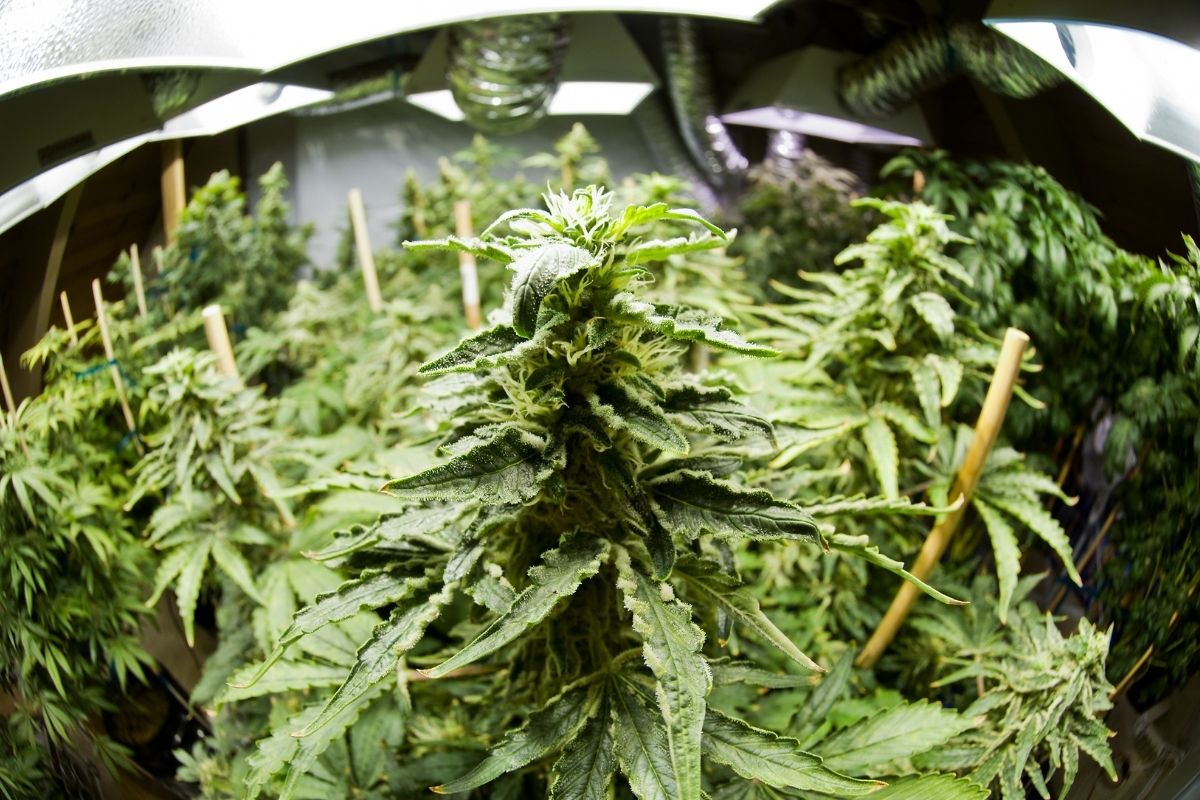
The leaf coverage and strength of the branches and stems of your cannabis plant are important factors in its ability to support its flower buds. More nodes and more leaves mean more energy and space for the colas to form. A plant that’s flipped too early won’t be able to produce as much marijuana to harvest as a plant flipped in good timing. A couple of weeks can make a big difference in a plant’s fullness at flipping time.
stress
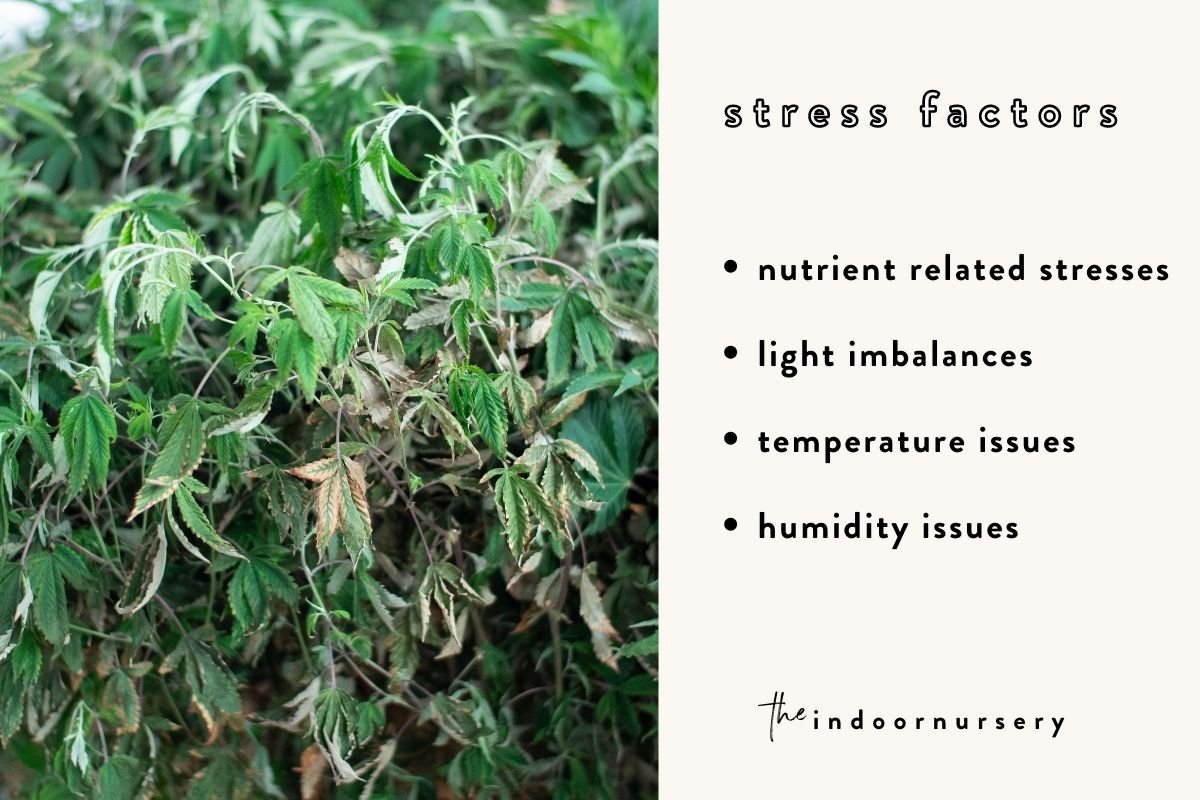
You should never flip a stressed plant into flowering stage. If you notice signs of stress on your plants leaves like wilting, discoloration, curling, or dropping, keep the plant in the vegetative state and nurse it back to health. When a plant is dealing with an infection like powdery mildew or a pest, it’s putting energy towards repairing damage. You can’t easily treat a plant in flowering stage for these kinds of pests, which is another reason it’s important to monitor your plants throughout their development.
In addition to signs of general stress, here are a few other issues to check your plant for before flipping it:
- Nutrient related stresses
- Light imbalances
- Temperature issues
- Humidity issues
In general, you’re looking for a healthy plant that can devote the majority of its energy to flower production when determining if it’s time to flip the plant.
flipping your marijuana plant
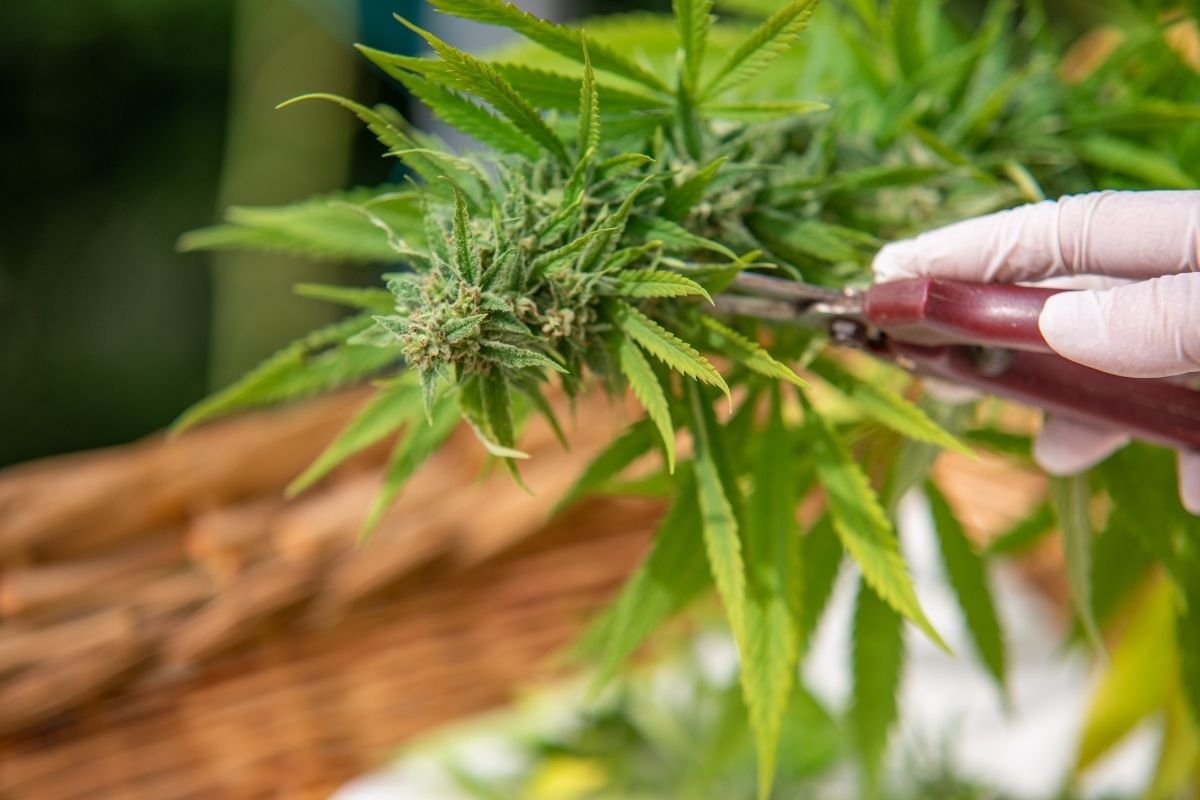
When your crop of healthy, bushy cannabis plants are ready to be flipped, a few changes to their care schedule will make for an easy and supportive transition. Making the following changes will ease your cannabis plants into the flowering stage:
- Changing the light hours and intensity
- Maintaining the temperature
- Adjusting fertilizer nutrient ratios
changing light hours and intensity
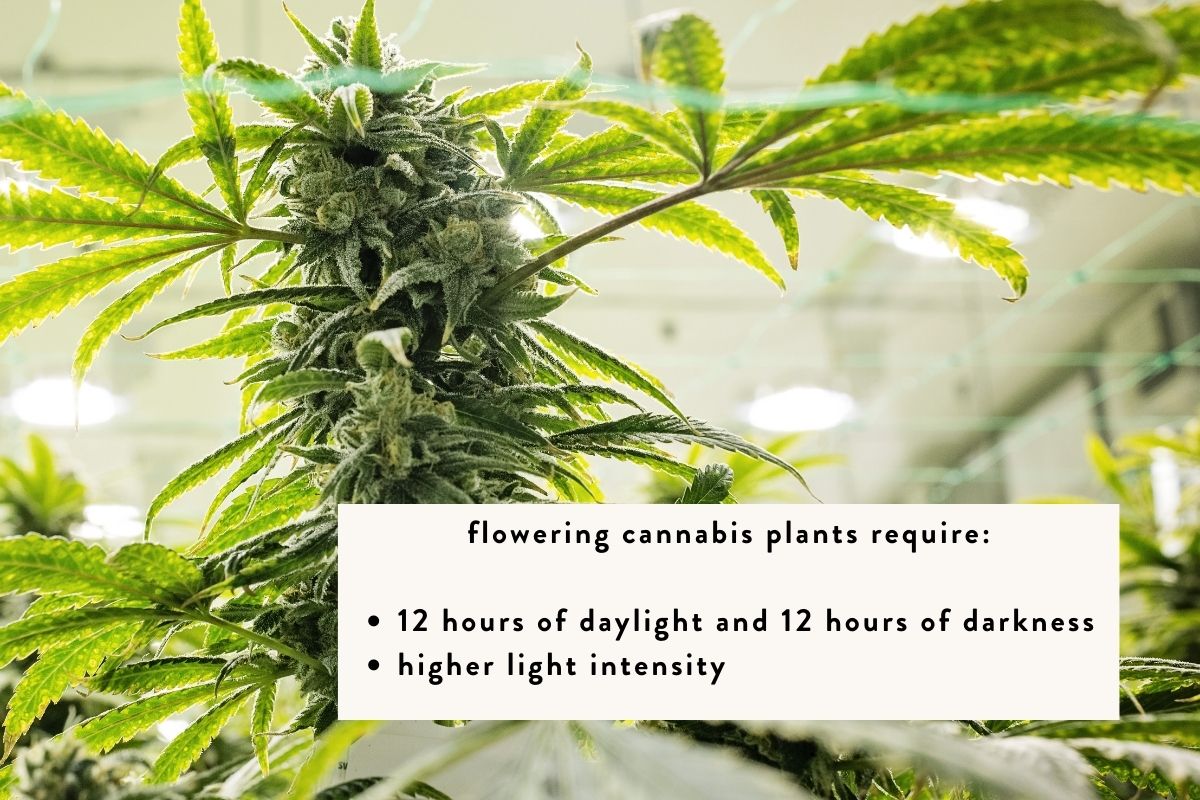
Plants need darkness to repair and maintain healthy growth. They use the energy they capture and store during the day to feed and repair themselves during the night. Flowering plants use this darkness in their mature stages to develop and grow their flowers. The flip is the shift from the longer, lower intensity light hours cannabis requires during its vegetative stage to the higher intensity, balanced light hours cannabis requires to flower. Flowering cannabis plants require:
- 12 hours of daylight and 12 hours of darkness
- Higher light intensity
Using a timer for your grow lights is the easiest and most effective way to make sure your plants are getting the correct number of light hours per day.
If your lights don’t have a built-in timer, you can use a mechanical or digital outlet timer to set the on/off hours for the tent.
If the marijuana plant is getting too much light, it may focus too much energy on photosynthesis and leaf growth, rather than using as much of its energy as possible on flower production. Many grow tents are light-tight to ensure budding plants have the darkest conditions possible when the lights are off.
Cannabis plants in the vegetative state need between 300 and 500 ppfd (photosynthetic photon flux density, or the intensity of light plants can absorb), while in the flowering stage they need 600 ppfd or more to feed the flowering growth. As the plant grows vertically, you’ll need to adjust both the height and intensity of the lights. Use a PAR meter, which measures light intensity, to make sure plants are getting the right amount of light.
Adjust the light intensity gradually, between 5-10% per day, until it reaches the appropriate setting to avoid shocking the plant. The number of hours doesn’t require such a gradual transition.
maintaining the temperature
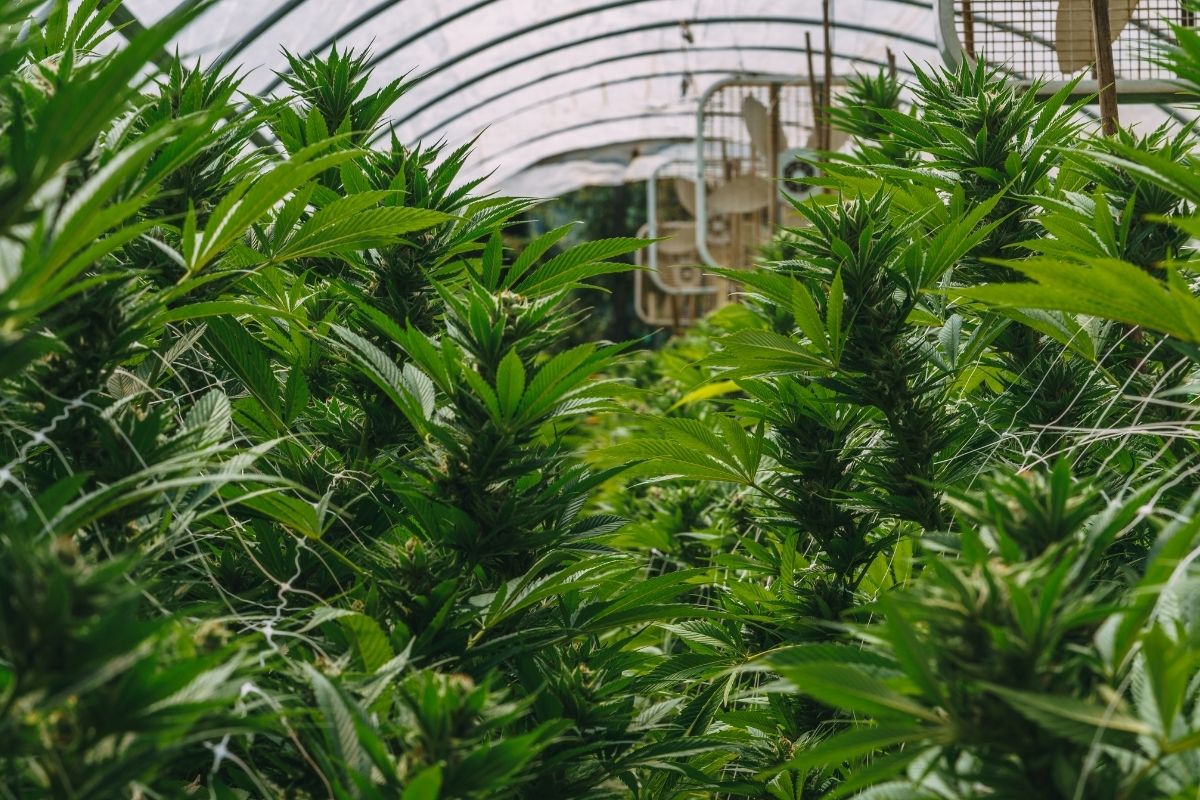
Temperature changes will be affected by the amount of light being issued, with less lighting meaning longer cool periods. Cannabis plants don’t like more than a couple of degrees of shift in daytime and nighttime temperatures, so you may need to use a heater to maintain optimal temps in the upper 70s.
The temperature also affects the relative humidity, or how much moisture the air can hold. Mature cannabis plants transpire a lot and prefer lower humidity than younger plants, so it will be important to pay attention to these metrics during the transition. Cooler temperatures may mean more condensation when there is a lot of moisture in the air, which can lead to issues with mold or mildew.
adjusting fertilizer nutrient ratios
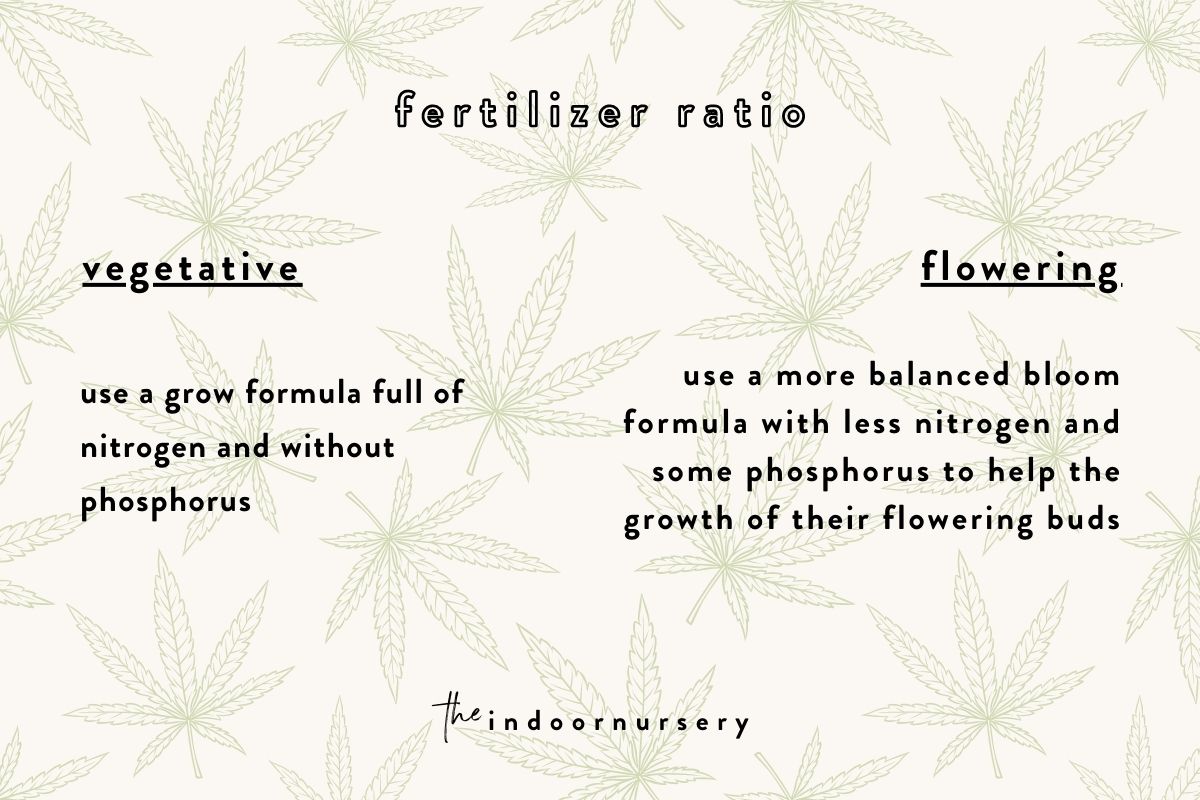
The plant’s nutritional needs will change between phases as well:
- Vegetative cannabis plants like a grow formula full of nitrogen and without phosphorus.
- Flowering cannabis plants like a more balanced bloom formula with slightly less nitrogen and some phosphorus to support the growth of their flowering buds.
Potassium is important during both of these stages to support cell growth, moisture retention, and overall health. It’s a good idea to gradually change the fertilizer as you adjust the light intensity on your plants. Switch to a bloom formula a week or two after you fully reduce the lighting conditions.
pro tips
- Total darkness period before flowering. Many growers will give their plants 36 hours, or three consecutive nighttime periods, of continuous darkness between their old and new light schedules to jump-start the flower growth. The flowering hormone, florigen, is produced during the night and it’s thought that an extended period of darkness may boost production of this hormone and speed up flower production.
- Get more output with these techniques. Try topping your plants for a bushier output. Explore these marijuana trimming techniques to get as much bud out of your plants as possible.
More about cannabis
- How To Treat A Magnesium Deficiency In Cannabis
- It’s Not O-K: Potassium Deficiency in Cannabis
- How to harvest cannabis (and use the entire plant)
- Male Weed Plant Stages: Don’t Ruin Your Crop
- How To Decarb Weed For Homemade Cannabis Products
- Loving the Ladies: Female Weed Plant Stages
- Patience is a Virtue: Curing Buds for Best Taste
- Understanding weed light cycles: Get the most from your harvest
- When to switch to flower nutrients for high cannabis yield
- How to make live resin at home, step-by-step

